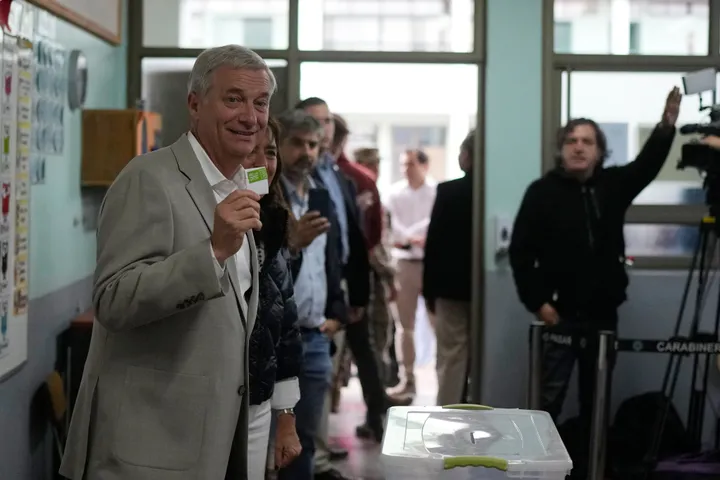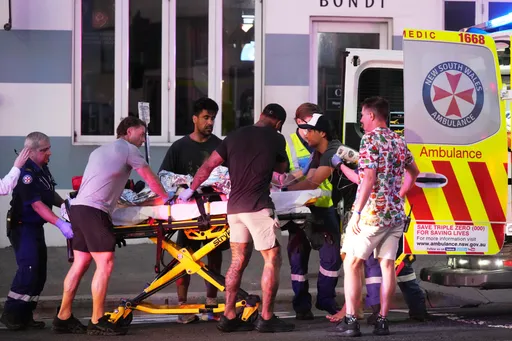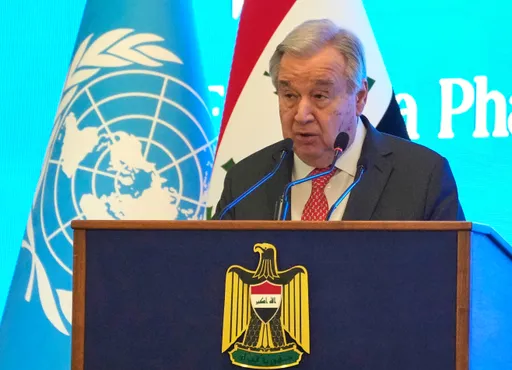India has recorded the world's sharpest spike in coronavirus infections this month, approximately 38 percent of the global cases, with political and financial capitals New Delhi and Mumbai running out of hospital beds, oxygen and medicines.
For the third consecutive week, the Southeast Asia region reported the highest relative increases in both case and death incidences, according to the latest report by the World Health Organization (WHO).
Globally, new Covid-19 cases have increased for the ninth consecutive week, with nearly 5.7 million new cases reported, surpassing previous peaks.
Scientists are studying what led to an unexpected surge, and particularly to see whether a variant of the novel coronavirus first detected in India is to blame. The variant, named B.1.617 and first detected in October 2020, has been reported in some 17 countries, raising global fears.
What is the Indian variant?
All viruses mutate over time as they spread from person to person to acquire genetic changes to adapt to their hosts. Or in other words, for survival.
The B.1.617 variant contains two key mutations to the outer "spike" portion of the virus that attaches to human cells, said senior Indian virologist Shahid Jameel.
The WHO has described it as a "variant of interest", suggesting it may have mutations that would make the virus more transmissible, cause more severe disease or evade vaccine immunity.
Other strains with known risks, such as those first detected in the United Kingdom, Brazil, and South Africa, have been categorised as "variants of concern," a higher threat level.
B.1.617 includes several mutations present in other variants.
Three characteristic mutations of this variant include L452R, P681R and E484Q, which are known as immune escape variants, they can evade immune system responses.
The L452R mutation has been identified in another variant of interest, B.1.427/ B.1.429, which has been associated with increased transmissibility, a reduction in neutralization by some (but not all) monoclonal antibody treatments, and a moderate reduction in neutralization in post-vaccination sera in the USA.
Is variant responsible for skyrocketing cases?
It's hard to say.
The WHO says more study is urgently needed. Laboratory-based studies of limited sample size suggest potential increased transmissibility, it concluded.
The picture is complicated because the highly transmissible B.117 variant first detected in the UK is behind spikes in some parts of India.
In New Delhi, UK variant cases almost doubled during the second half of March, according to Sujeet Kumar Singh, director of the National Centre for Disease Control.
The Indian B.1.617 variant, though, is widely present in Maharashtra, the country's hardest-hit state, Singh said.
Prominent US disease modeller Chris Murray, from the University of Washington, said the sheer magnitude of infections in India in a short period of time suggests an "escape variant" maybe overpowering any prior immunity from natural infections in those populations.
"That makes it most likely that it’s B.1.617," he said.
Studies have highlighted that the spread of the second wave has been much faster than the first, the WHO said.
Preliminary modeling by WHO based on sequences submitted to GISAID suggest that B.1.617 has a higher growth rate than other circulating variants in India, suggesting potential increased transmissibility, with other co-circulating variants also demonstrating increased transmissibility.
But Murray cautioned that gene sequencing data on the coronavirus in India is sparse, and that many cases are also being driven by the UK and South African variants.
Carlo Federico Perno, Head of Microbiology and Immunology Diagnostics at Rome's Bambino Gesu Hospital said the Indian variant couldn't alone be the reason for India's huge surge, pointing instead to large social gatherings.
Prime Minister Narendra Modi has been criticised for allowing massive political rallies and religious festivals which have been super-spreader events in recent weeks.
Nearly 3.5 million Indian devotees gathered in Uttarakhand in mid-March to take an annual holy dip in the Ganges to mark the colourful event, ignoring any coronavirus threat.
Millions of Indians also gathered to vote in the legislative assembly elections in four states West Bengal, Assam, Kerala, and Tamil Nadu. Between March and April, parties held extensive rallies and crowded political campaigns.
READ MORE:In pictures: Indian crematoriums burn non-stop amid deadly second wave
How many new variants present in India?
Another variant detected in India is doing the rounds in the Bengal region and becoming extremely dominant. The variant called B.1.618 is stuck with the unrepresentative name of "triple mutant". It is the second variant to identified from India after B.1.617.
The “Bengal strain”, as one scientist has dubbed it, might be more infective, and, something that experts find particularly worrying, may be capable of escaping a person’s immune surveillance, decrease the vaccine response. It also may cause a second infection despite a patient's recovery from Covid-19.
The B.1.617 variant's geographic distribution was observed across regions, alongside of other variants ( B.1.618), which collectively may be playing a role in the current resurgence in this country.
READ MORE:India’s virus deaths top 200,000 as cases soar and economy hurts
Which countries detected the variant?
As of April 27, over 1,200 sequences have been uploaded to the WHO variant tracking system and assigned to lineage B.1.617 from at least 17 countries; most sequences were uploaded from India, the United Kingdom, the USA, and Singapore.
The Indian variant is quickly becoming the UK’s second most dominant within weeks, experts have warned after total cases rose to 400.
Health authorities said the variant has not caused any widespread community transmission but experts warn that the risk of another surge is still valid as the UK recently eased lockdown measures.
India was placed on England’s travel “red list” from April 23, restricting arrivals to citizens and residents who must quarantine in a hotel.
France detected its first three cases with the B.1.617 variant, the Health Ministry said in a statement late on Thursday.
Uganda also detected the variant, igniting fears the East African nation could suffer a resurgence of cases just when its outbreak has waned, a senior health official said.
READ MORE:India dispatches army medics to Covid hospitals
What about vaccine efficacy?
French Health Minister Olivier Veran told France Info radio that it was still unclear if available Covid-19 vaccines were effective against the Indian variant, adding the danger of the variant must not be underestimated.
White House chief medical adviser Anthony Fauci said earlier this week that preliminary evidence from lab studies suggests Covaxin, the vaccine developed in India by Bharat Biotech appears capable of neutralising the variant.
Public Health England said it was working with international partners but that there is currently no evidence that the Indian variant and two related variants cause more severe disease or render the vaccines currently deployed less effective.
READ MORE: Medical students become 'cannon fodder' in India's Covid-19 fight
























